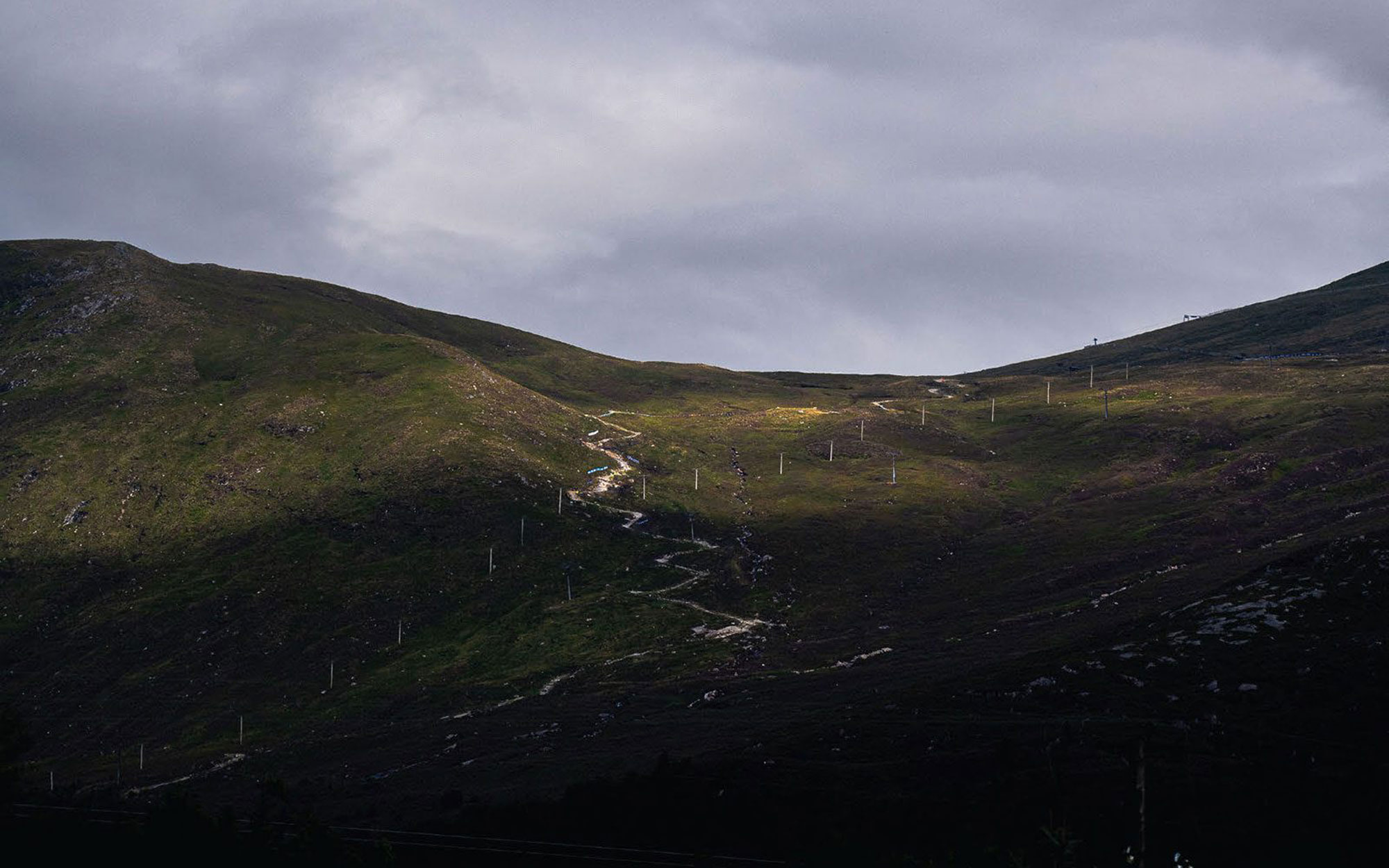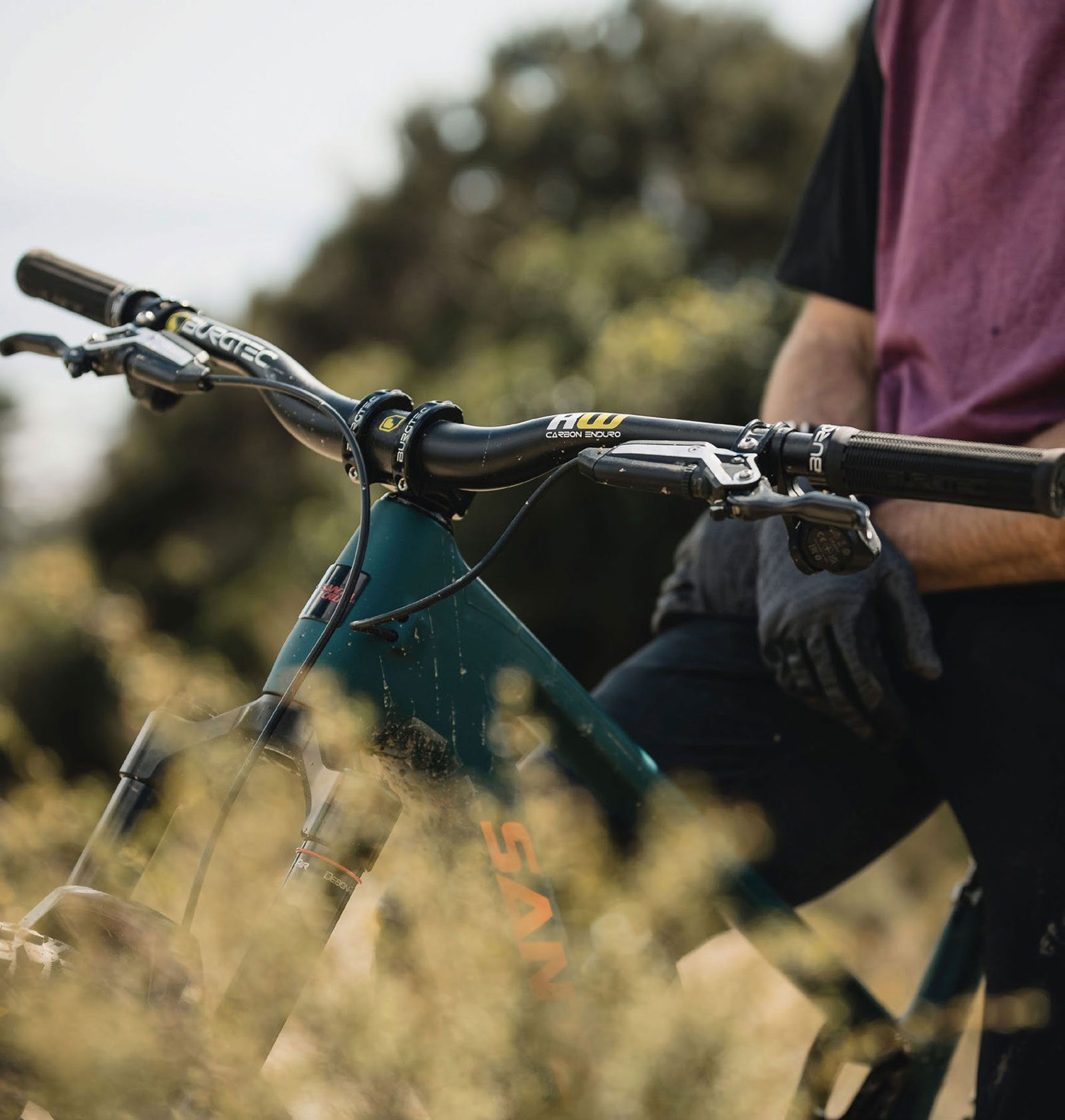Yamaha YDX Moro 07
Words Lester Perry
Images Darren Stanley
RRP $8999
Distributor Yamaha NZ
I’m always intrigued when a large company enters the Electric Mountain Bike market and tries to take on the ‘Big Three’ (Giant, Trek, Specialized). They come in with a hiss and a roar, take a small share of the market, fight for scraps for a few years, then finally the accountant strikes a big red cross through the eMTB line on their spreadsheet, parking the project and returning them to their core business.
Yamaha has gone about things differently. They developed the world’s first production eBike 30 years ago, and have been building eBikes for the Japanese market for the last three decades. More recently, they’ve supplied motor units to many of Europe’s most popular eBike brands, including international juggernaut, Giant. The YDX Moro 07 is just one piece of their global ‘Switch ON’ strategy which spearheads their move into the world of electric personal mobility and away from fossil fuels. Perusing their international website, you get a taste for Yamaha’s plans: they offer options in almost every category of ‘Power Assist Electric Bicycle’, including models targeting road and gravel (but why?).
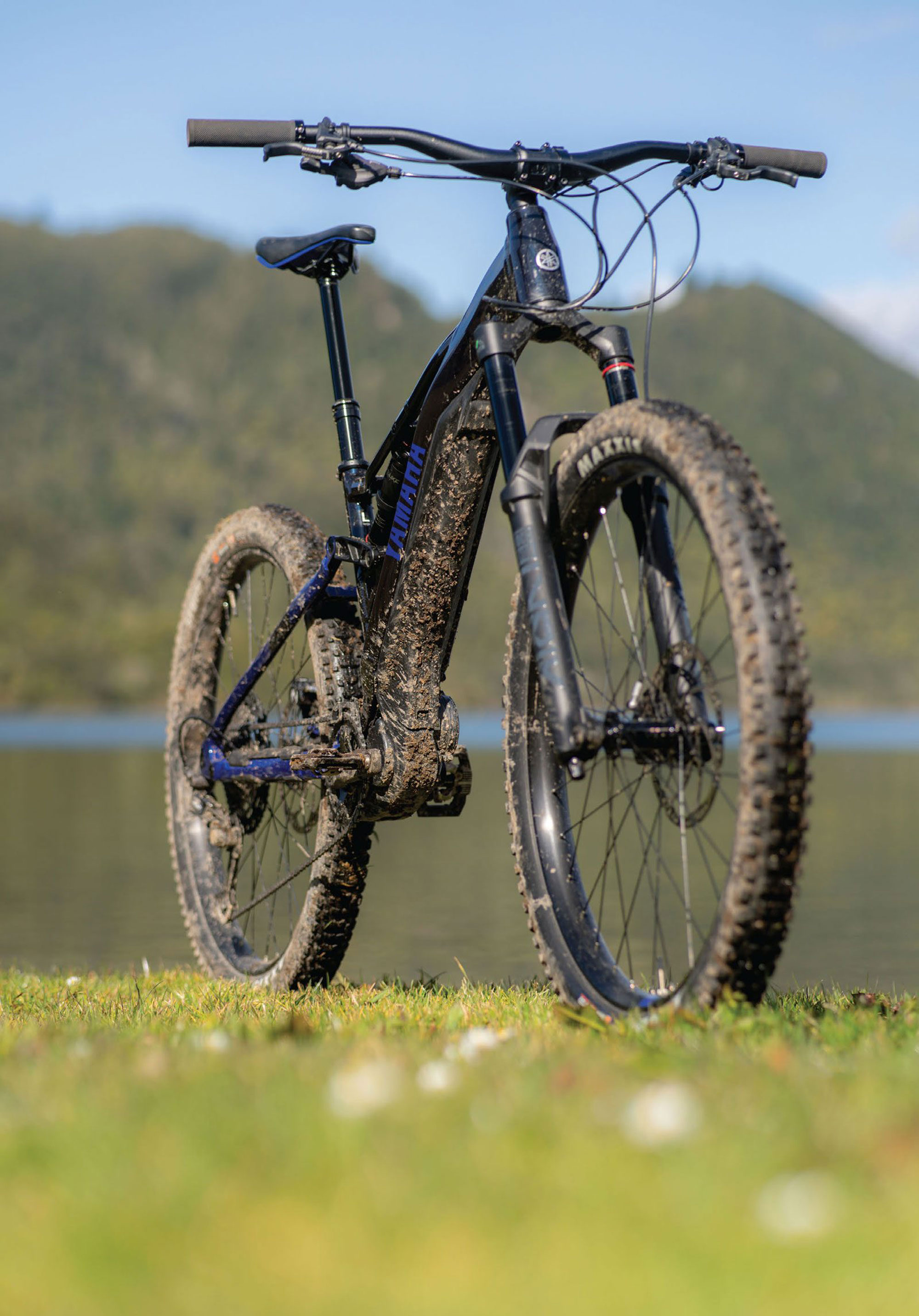
The YDX Moro 07’s frame has been around for a few years now and has some unique and eye-catching hallmarks. The ‘Dual Twin Frame’ splits the top and down tubes into two, sharing some visual cues with their motocross bikes. The rear shock tucks comfortably into the split top tube and the battery fits neatly into the split downtube. The key upgrade to this most recent model is the inclusion of Yamaha’s latest eMTB motor, the PW-X3 -their lightest, smallest, and most powerful drive unit. Boasting 85nM of torque, it’s on the money versus the competition and is powered by a 500w/hr battery.
The frame is set up specifically for 27.5” wheels and features 150mm of rear travel, made possible by a custom-tuned Rockshox Super Deluxe Select+ shock. Up front, the bumps are tackled by a 160mm Rockshox Lyrik Select tuned for eMTB use. Nowadays, we’re seeing most bikes in this travel segment with either dual 29” wheels or mullet style, 27.5” rear and 29” front wheels, so this bike is unique in its full 27.5” setup. Fitted with a Shimano XT drivetrain, gear shifts were precise, rapid, and remarkably trouble-free -even under power.
Geometry is what I’d term conservative for a 150mm/160mm travel bike. The head angle sits at 66.3 and the seat tube angle is a vanilla 70.2 degrees. After perusing the Yamaha website and crunching the numbers on the three available sizes – small, medium and large – I determined I’d be best suited to a large frame. The ‘reach’ numbers were somewhat puzzling; a medium at 437mm and large at 482mm – that’s a major step up between sizes and at 482mm I thought the large may feel a bit long, and the medium very short. Yamaha’s sizing chart had me firmly on the medium size but after comparing reach to my personal bikes I settled on the large. At 176cm tall, I was comfortable with the large size but I’d say if you were over 185cm in height you might be too tall for even the large to be comfortable, regardless of Yamaha’s sizing recommendations. Some of these geo figures are quite a departure from modern bikes of this ilk and prove how geometries have evolved in the last few years. With all this said, we all know how a bike rides is more than just specs and numbers.
Assistance modes on offer are ECO, Standard, High, Extra-Power and Automatic, as well as a handy Walk Assist that gently drives the rear wheel when needing to push the bike somewhere. Assistance levels are clearly visible while riding, on the brand’s ‘Interface X’ LED display, and easily adjusted on the fly via the ergonomic remote switch just beside the dropper post lever on the righthand side.
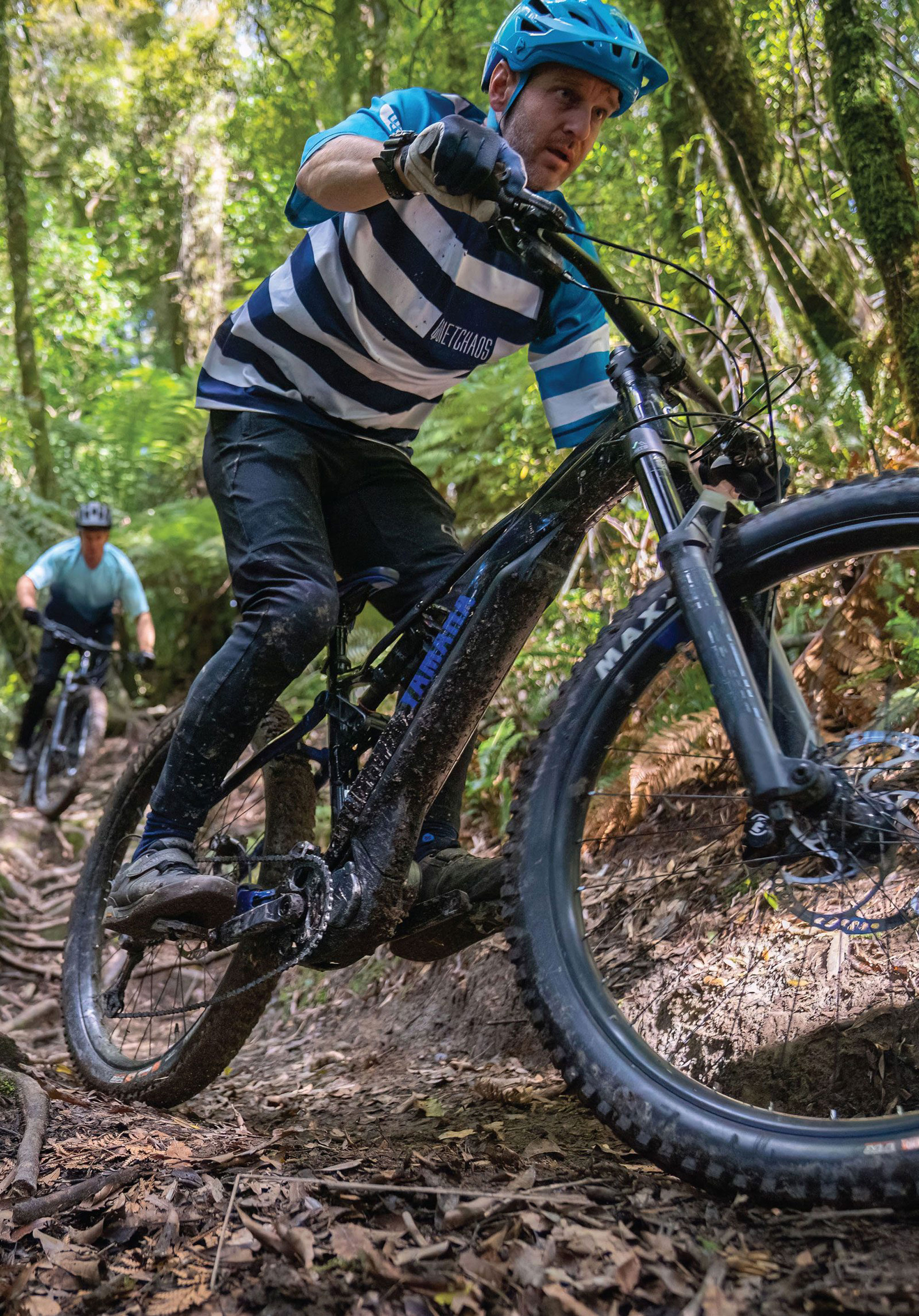
After some initial tweaking of the suspension pressures to suit my weight and riding style, getting used to the bike was a cinch. Some bikes take a good amount of time to feel familiar, but this bike didn’t have that issue and I was quickly tackling trail sections with the same gusto as I would on my regular bike. The comparatively small wheels made initiating turns and adjusting lines quick and easy, and the bike cornered well, even with at times bad technique.
Climbing is where eMTB’s shine; getting up technical and steep climbs that you couldn’t physically manage on a regular bike. The MORO 07 climbs really well most of the time; I found the ‘Automatic’ power mode and its ability to automatically adjust the output depending on the rider’s pedalling input, offered the optimal amount of power for most situations and gave a very natural feel while pedalling. Only when blasting along gravel roads or pedalling up to max speed into a trail feature did I select the Extra-Power mode; in most scenarios it was simply too much and was overly aggressive with the supply of power, causing unwanted accelerations or wheelspin while climbing techy or slippery trails.
Heading downhill brings a huge grin to the face: it’s flat-out, simple and fun aboard the MORO 07. The bike feels well-balanced, and even playful, for a 23.7kg eMTB. It’s composed and stable in most scenarios and, even when compared to its 29” wheeled brethren, the bike has long chainstays which aid stability when descending at high speed and help limit sketchiness through chunky terrain. The downside is that, when combined with the long reach on the large size, it isn’t simple to pull the front end up to manual through deep dips in the trail. Sure, it’s doable, but shorter chainstays would make it easier.
Descending, confidence is boosted by the Magura MT5 4-piston brakes; I’m pretty finicky when it comes to brakes but the solid, woody feel suited me and when coupled with 203mm rotors front and rear there is plenty of stopping power on tap, something that is lacking on many eMTBs, and surely necessary with the extra weight of an eBike, to stay in control while descending.
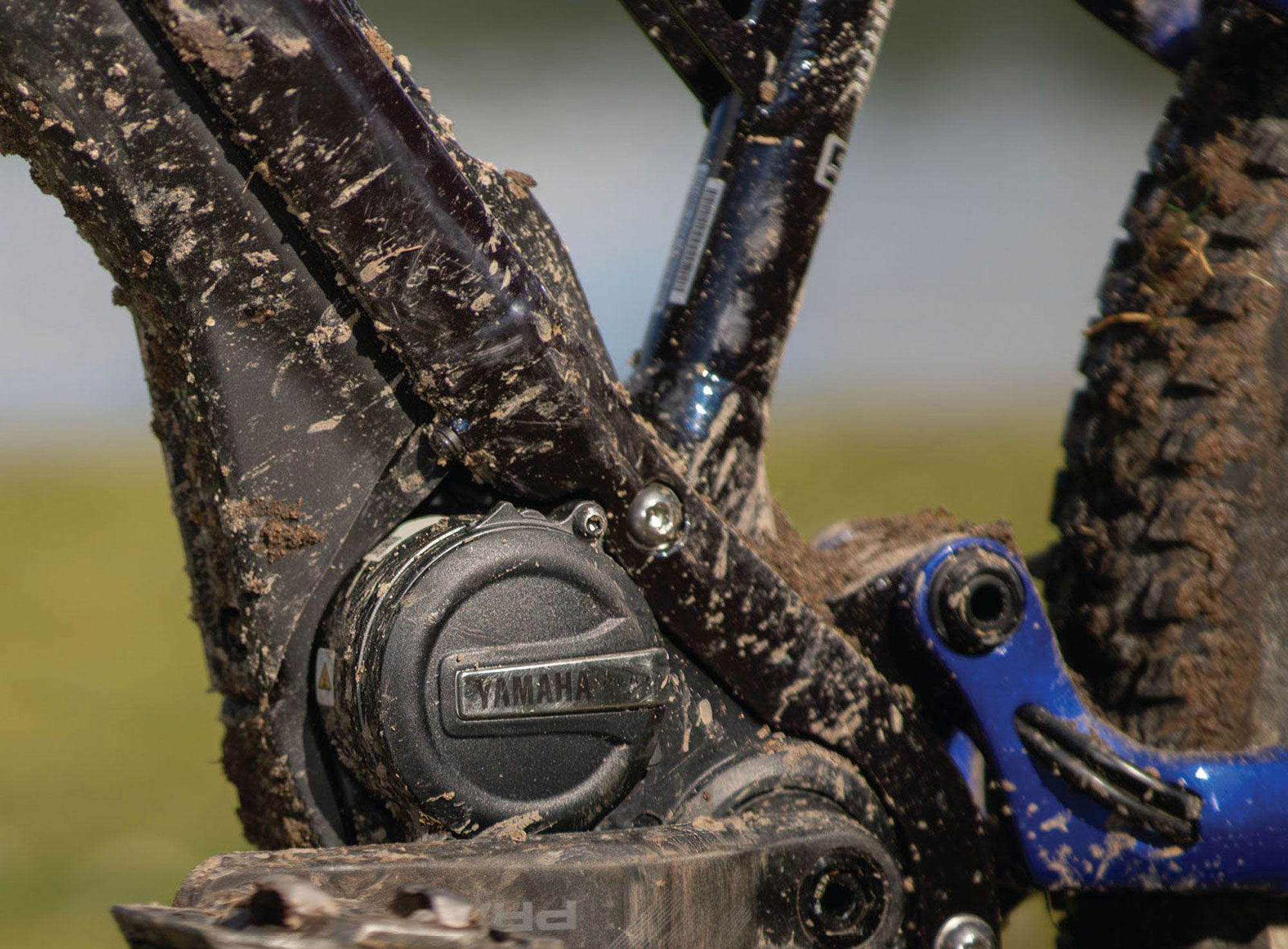
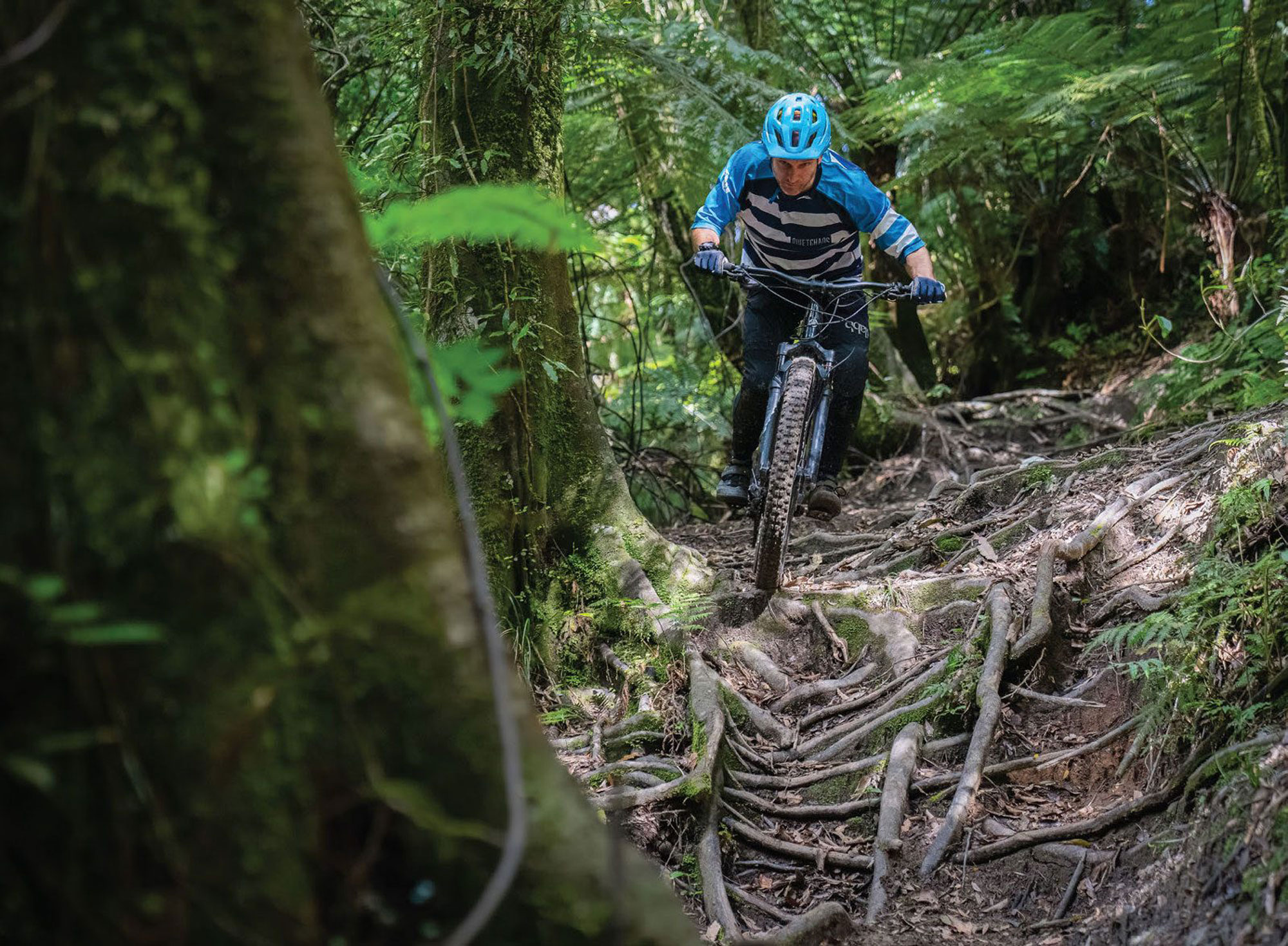
The large volume 2.8” wide tyres damp trail chatter, inspire confidence, and enable you to hold a good line… to a point. I did find that under big compressions or very hard hits, particularly on steep descents, the tyres could be unpredictable as they warp under the strain. This was a bit unnerving at times but is something I’ve experienced riding 27.5”+ sized tyres previously. This could be helped by running a stiffer casing tyre, or tyre liner like a Cush Core or similar. The pairing of the Maxxis Minion EXO+ DHF 2.8” up front with the Maxxis EXO+ Rekon 2.8” on the rear was good for general use and in dry, hardpacked conditions they hooked up well, but the Rekon on the rear fell short while climbing steep, loose or wet pitches; the knobs simply aren’t up to the task as it’s a small knobbed tyre designed for pedalling speed rather than high torque traction. I would have liked to see a tyre with a stiffer casing and larger knobs specced on the rear, either a Maxxis Minion DHR2 or similar would be perfect with larger, paddle-style central knobs for traction, and stiffer casings for increased stability. Let’s talk about the elephant in the room: the 500Wh battery. Three years ago, a 500Wh battery was considered pretty standard, however nowadays, even at the price level of the MORO 07 full power, eMTBs are generally specced with batteries of 600Wh or higher. The larger batteries usually come with a slight weight penalty at this level, but a couple of hundred grams for another 100Wh at least is probably worth it. With this all said, I’ve been surprised how much more efficient this motor is with its power than some other brands, and the range is reasonable -it’s impossible to put numbers to this but if you don’t go heavy with the max assist you’ll get a good couple of hours riding in before the battery life is an issue.
I’ll be honest, I was pretty sceptical when Yamaha offered up this bike for review, but outside of a few things I’d change, it really surprised me by how fun it is. After spending some good hours on it across multiple rides and trail styles, I find it hard to pin point any deal breakers and it really goes to show that how a bike rides is the sum of all its parts, frame included, not just the geometry numbers and any preconceptions these may bring about. I’d be interested to know how the bike would improve with a 29” wheel up front, some shorter cranks and more aggressive tyres –all of which could be experimented with by a buyer.
Riding bikes is all about having fun and the MORO 07 delivers this in spades. Although $8999 isn’t small change, it’s comparable to the competition and if you’re looking for a quality bike without blowing the budget, this rig packs a good bang for buck and will stand out on the trail amongst the hordes of bikes by the “big three” brands that now flood the trails.
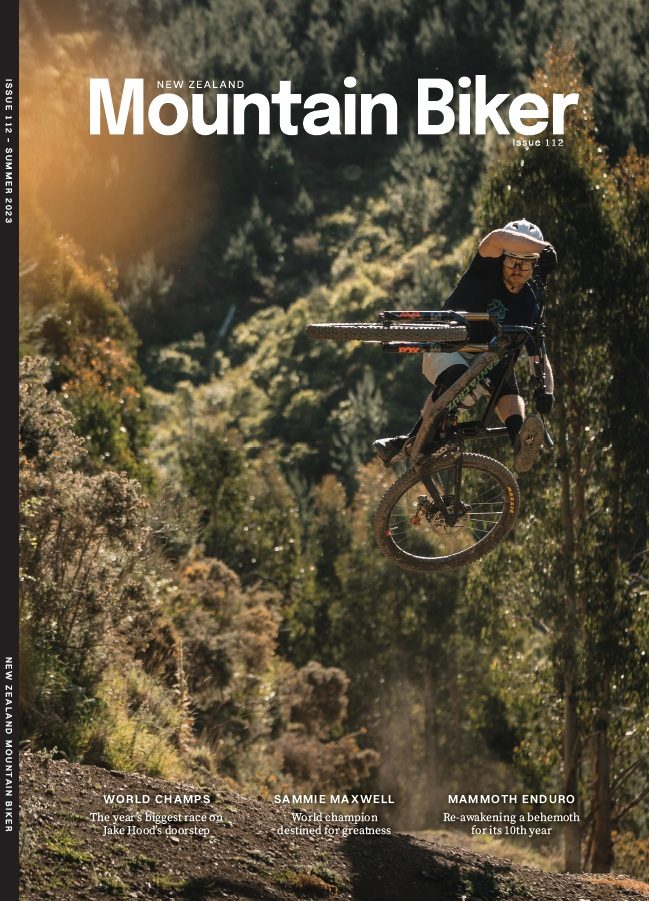
Welcome to Scotland
Words & Images Jake Hood
“There’s no such thing as bad weather, just inappropriate clothing,” This is a common saying that’s thrown around in Scotland. Well, whoever said that is a flipping idiot, I thought to myself as the rain hammered down on us at the start of the men’s DH final in Fort William.
The rain drenched everything in sight, showing no mercy; not even my triple Gore-Tex 50,000 waterproof Montbell jacket stood a chance. Welcome to Scotland.
This year would see the inaugural edition of the UCI Cycling World Championship. Yes, there have been World Champs before, but this is slightly different. Instead of just select events being held in different places worldwide, it would all be condensed into one country over 11 days. There were 115 events and 101 para- events over 13 different disciplines. There would also be a medals table for the countries competing, like the Olympics and (also like the Olympics) it’s to be held every four years. The inaugural one was to be hosted by Scotland.
With a big break in the Enduro World Series between rounds, it seemed like no better time to head back to the motherland to watch some events. It had been four years since I was last there – four years too long. I’d almost forgotten that it rains a lot in Scotland, though I was quickly reminded during my eight week stay. I managed to only get three days without it raining, to some degree, throughout the day.
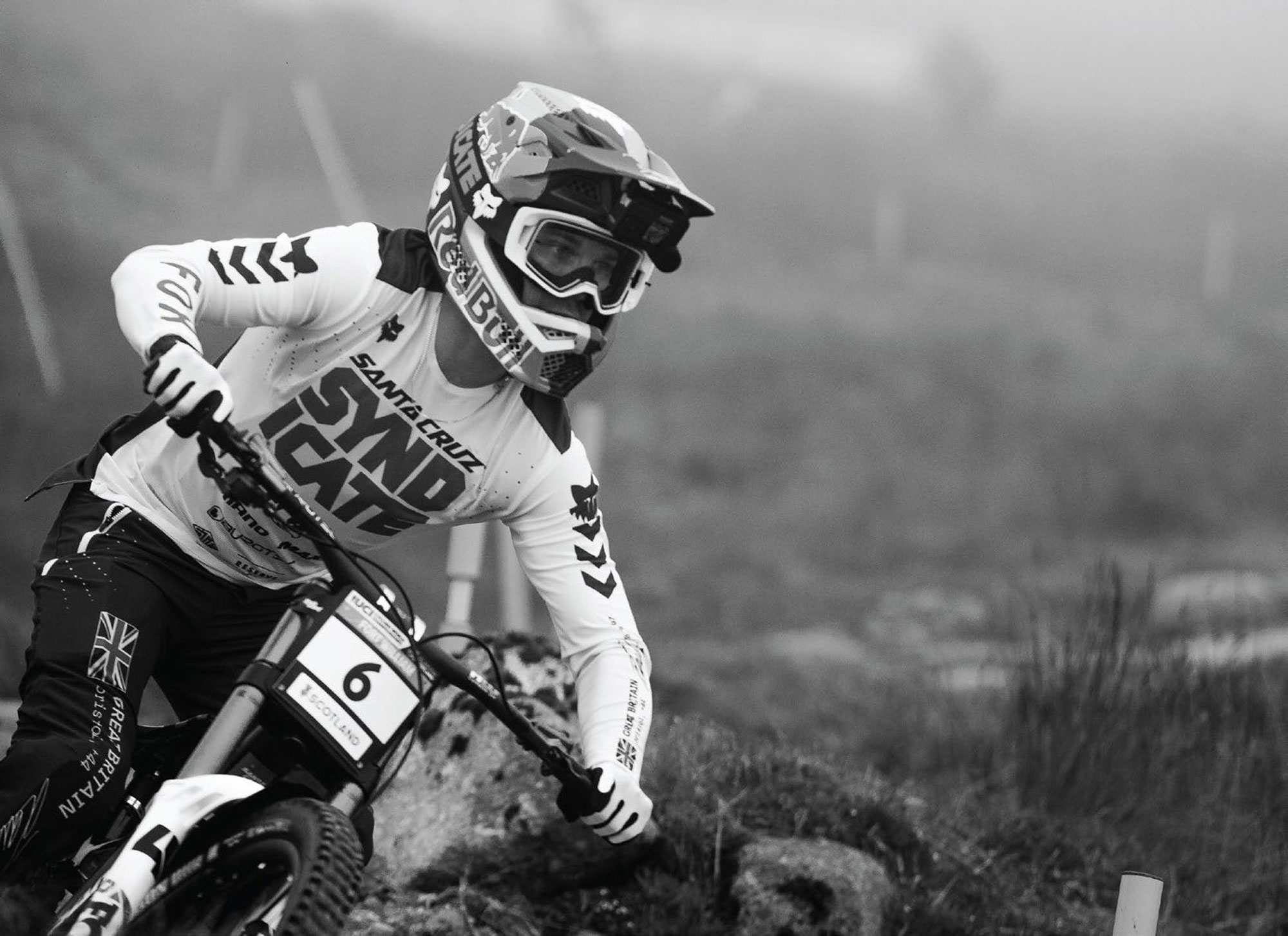
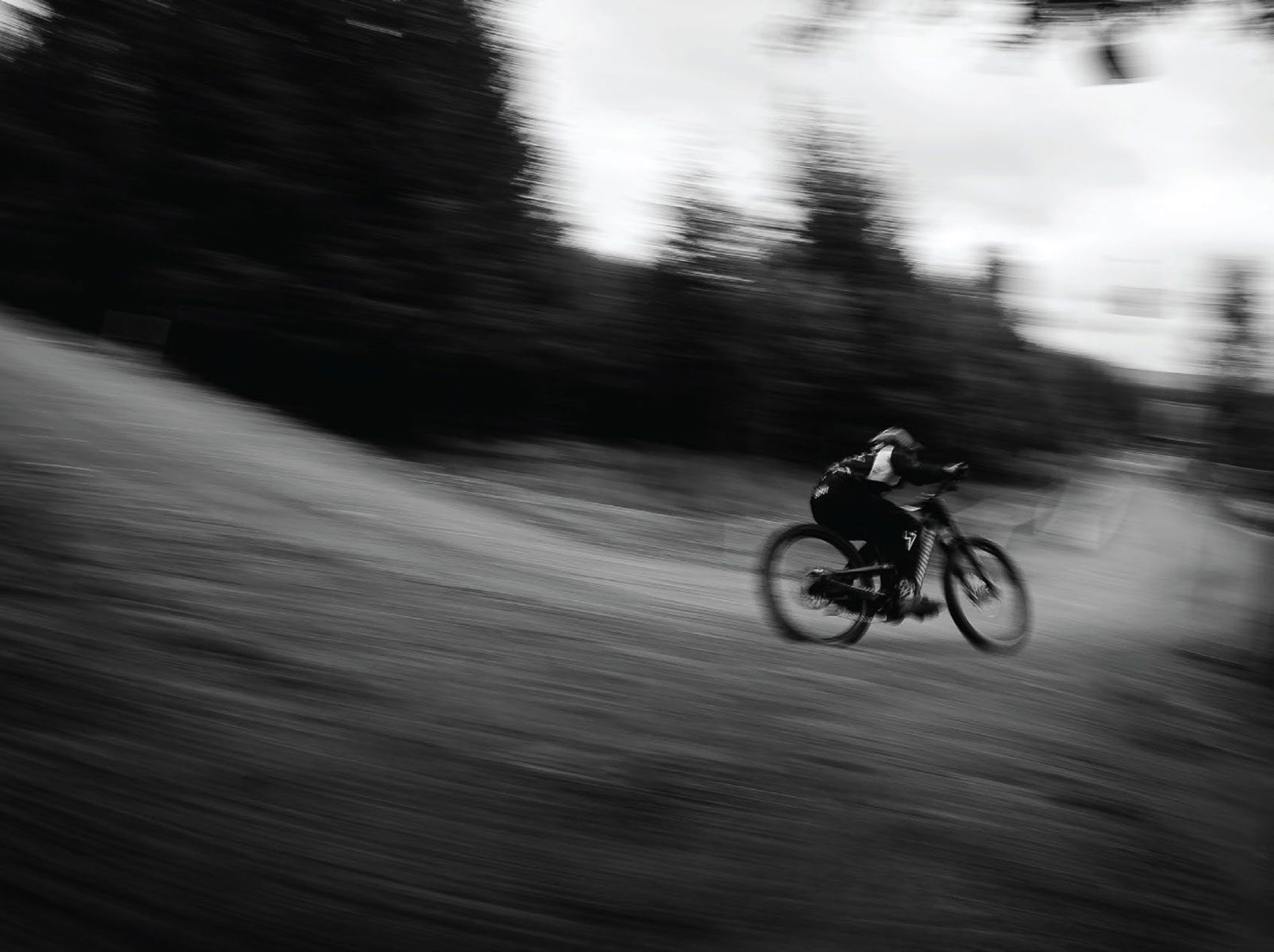

The downhill was going to be held at the world-famous Fort William track. It has been a staple on the circuit for years. My first experience of being at this place was the World Cup in 2005 as a young lad. It was a magical place. I was in awe of the pits, the riders, the bikes, and the track. The place was packed with people and, walking around the pits, I would stare at the bikes for hours, fascinated by them as well as the riders fly down the track at stupid speeds. It was incredible as a young lad. That year, Steve Peat won and I’ve never heard a sound like it when he flew across the Visit Scotland jump into the finish area. The crowd erupted in noise that built in a crescendo until he crossed the line and won. At that point, it was like an explosion of sound and emotions. It was defining. People cheering, banging things, blowing horns. I get goosebumps even just thinking about that moment. When people talk about being at Fort William WC, they often talk about that energy.
Fort William last held the Downhill and XC World Champs back in 2007. I was at that race as well and it was a wet, wild week. Sam Hill dominated the men’s field to take the win, and Sabrina Jonnier won the women’s, but it was Ruaridh Cunningham (the Scotsman) who stole the show by winning the junior males DH and giving Great Britain its first rainbow in downhill.
I forgot just how beautiful the drive up to Fort William is if you head via Glencoe. The rolling green hills and farmland of central Scotland gradually turn into dense woodland, sparse heather-covered mountain areas, and sparkling lochs. It’s a beautiful drive that is very popular with tourists. As you enter Glencoe, you are greeted by towering, almost vertical, mountainsides that enclose the road. The valley floor is lush and green, crisscrossed by streams and rivers. Waterfall’s cascade down the mountainsides, and the atmosphere is one of wild, untamed grandeur. It’s a landscape that exudes both awe and a sense of isolation, but it’s also a reminder that it’s rugged up here. You have to respect the landscape, or it will bite back. Admire it, but treat it well. A short time after you finish driving through the glen, you arrive in Fort William. Above the town towers Ben Nevis, the highest mountain in the UK. It’s sparse and covered in rock. From a distance, it doesn’t look like there are any signs of life on there and it serves as a reminder that you’re in the Highlands now.
KIWI JNR. WOMEN
SACHA EARNEST, ERICE VAN LEUVEN, POPPY LANE
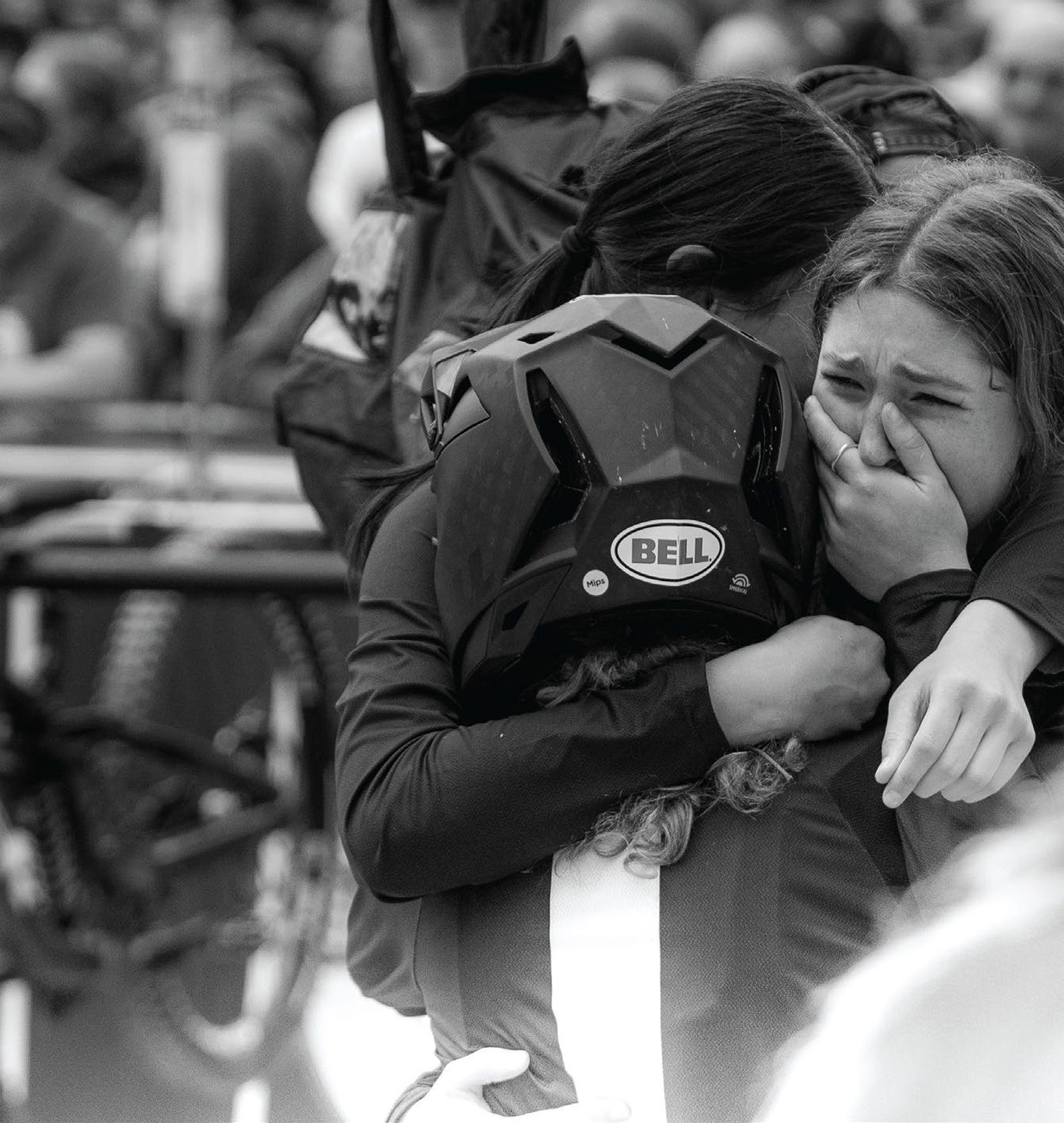
The respect you have to treat the outdoors with transfers to the downhill track on Aonach Mor. It sits three mountains over from Ben Nevis. It’s a historic track; rugged, hard and fast. A course of three parts, it’s 2.9km of bike-smashing, arm- pump-causing, leg-burning hell of a track that descends 547m. The top half weaves its way through the open moorland and its surface is made up of gravel, granite slabs, and rock. Rock graders litter the way down the track. It’s unbelievably rough. Spectating trackside, you often hear the sounds of rims being smashed into the super hard granite. You do not want to crash up here. During race day, spectators will walk down the track through the moor, trying to avoid the bogs and slipping in the peaty soil beneath their feet. I, for one, didn’t manage this and took a few tumbles. After the open section, you make it to the most technical part of the track, the woods. By this point, your arms and legs are burning. You’re struggling just to hold on, but you have to navigate your way through the twisty, wet, muddy, root-infested bit of track before holding as much speed as you can onto the motorway. You might not win the race in the wood, but you can certainly lose it. One mistake could cost you a lot of time. Finally, you make it to the motorway. A long run into a hip jump catapults you into the row of jumps that guide you to the finish area. It may seem like the simplest bit of track, but it’s proven to be a very crucial part of the race. Races have been won and lost here before. To finish off the track, you jump into the finish area before descending down the “wall” into the last jumps and drops of the track before you cross the finish line. It’s a savage track, unique to everything else that gets raced, one that always provides thrilling finals.
Though it is remote, people from all over the UK flock to this race. It’s incredible just how many of them make the trip. On race day, there’s a sea of people throughout the pits and up the hill on the track. Sometimes it’s hard to stroll through the pits because of the number of people. The UK fans really get into it; some dress up in crazy outfits, and some dress down. Occasionally, you get the odd streaker. The true spirit of the event, though, is the wild camp. Located not far from the event, a 20-minute walk maybe, a large farm field gets turned into a campground for the weekend, with a mix of tents, vans, and campervans. It has real festival vibes, and huge parties happen there that go on until the wee hours. People wake up hungover only to continue drinking to help get them ready to watch the racing of the day before continuing to get back on it for the rave that evening. It’s a non-stop party all weekend.
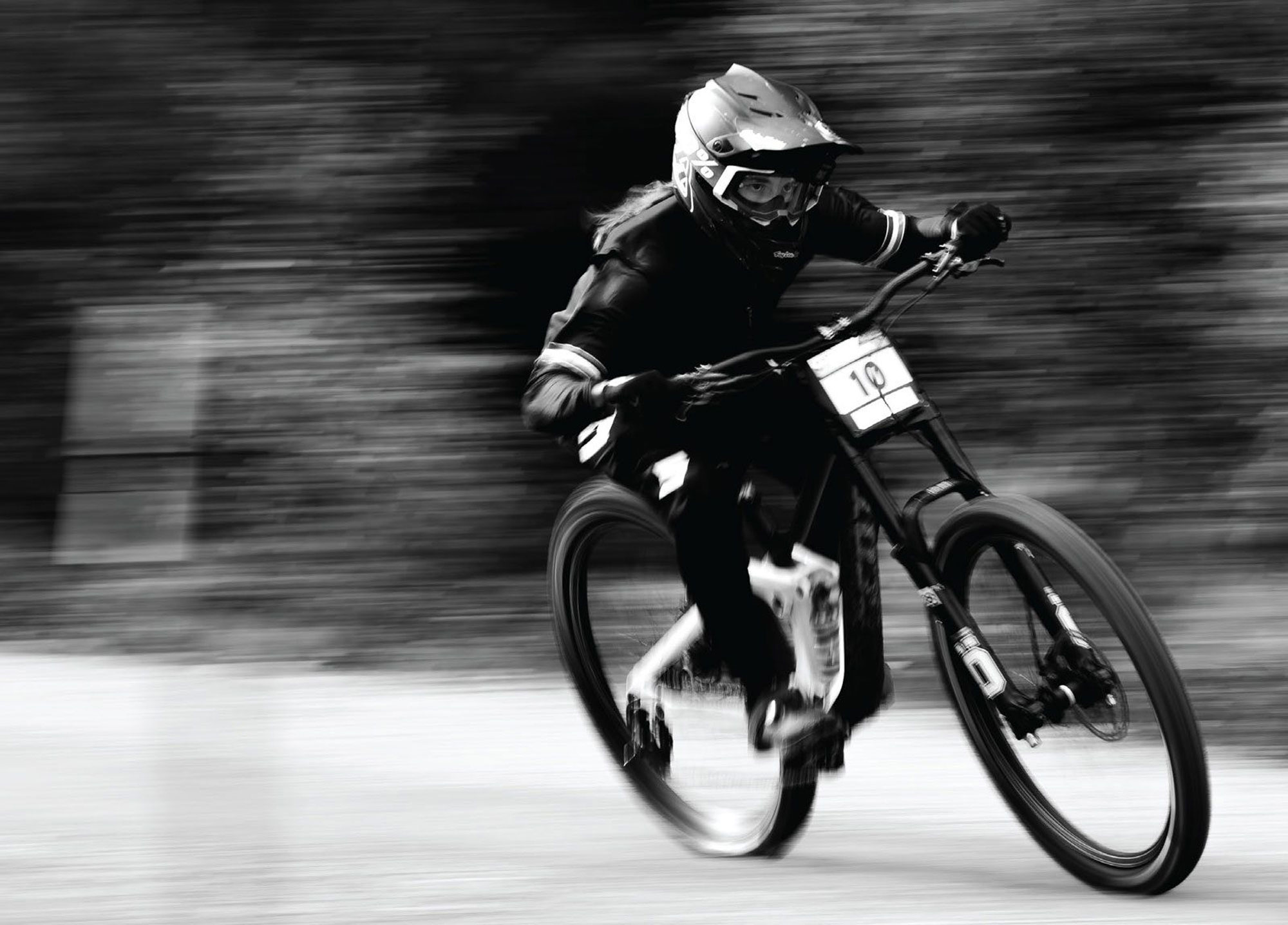
THE RAIN continued to lash down, SATURATING EVERYTHING IN SIGHT.
There are a couple of essentials you really need to pack if you decide to come and watch this race. First of all, bring your waterproofs. At the end of the day, we are in Scotland, a country synonymous with bad weather. It might be forecasted for sunny skies throughout the week, but this is the Highlands. The weather can turn on a dime. So be prepared and pack those waterproofs. The other essential, and I mean essential, is getting yourself some Smidge. What is Smidge, you might ask? Well, in Scotland, we have these little pests called midges, which are basically tiny flies that love to bite you. They truly are pests. They will swarm around you, biting you all over. No part of you is safe. If you’ve been to Scotland, chances are you will know how bad they can be. They suck, but Smidge is a spray-on repellent that keeps these little insects at bay. I’ve warned you. Don’t get caught out because you will know about it.
The weather was on and off throughout the week and played a pretty big factor in the race. It stayed good for the day of the juniors and qualifying races; what a day that was for NZ. Poppy Lane was one of the first to drop in the junior women’s category. She put down a blistering run that saw her comfortably in the lead and onto the hot seat. Junior woman after junior woman tried to beat that time but couldn’t. Poppy was in the hot seat for a long time, looking surprised every time a rider came down and didn’t better her time. Sasha Earnest laid down a great run and got close to Poppy’s time but ended up 0.417 seconds behind. Was anyone going to be able to deny the win for Poppy? There were two riders left at the top of the hill: the fastest qualifier, Erice Van Leuven, and fan favourite, Aimi Kenyon, from Scotland. Erice had been dominating this year in DH and Enduro and, at Fort William, it was no different. She blitzed the course and came down into the lead by 5.208 seconds. It was a huge lead. Both Poppy and Sasha ran over and hugged her with a NZ flag. Were we going to witness history being made? Aimi Kenyon came down. The crowd was roaring and cheering her on, but she was back at the top in the first two splits. Poppy and Sasha were hugging Erice tightly in the hot seat. They were all tearing up. As Aimi hit the jump into the finish area, Erice knew she had done it. Aimi crossed the line in fourth place. It was a New Zealand 1, 2, 3. The girls got up and celebrated. I think they were shocked at what had just happened. I was tearing up watching them hug each other in joy; it was an emotional moment. The crowd was going wild. What an incredible thing to witness. It’s fair to say that the future is bright for New Zealand in women’s downhill racing.
In the junior men’s race, Germany got their first DH world champion. Henri Kiefer took the win with Canadian, Bodhi Kuhn, taking second place, and Léo Abella of France rounding out the podium.
The following day was the main event: the DH finals. As I rode to the event with my brother, his partner and my niece, the weather was looking pretty great. A few clouds around but mostly sunny skies. It looked like it was set to be an epic day of racing. There were thousands of people flooding into the event. Fans were everywhere: in the pits, up the track, in the grandstand. The food court was packed with people drinking and eating. The slight breeze and warm weather kept the dreaded midges at bay. The pits and expo village were bustling with people trying to see and get up close to their favorite riders while they got prepared in the pits. There was an energy about the place. It was going to be a special day.
U23 UCI WORLD CHAMPION
SAMARA MAXWELL rode a truly dominating race
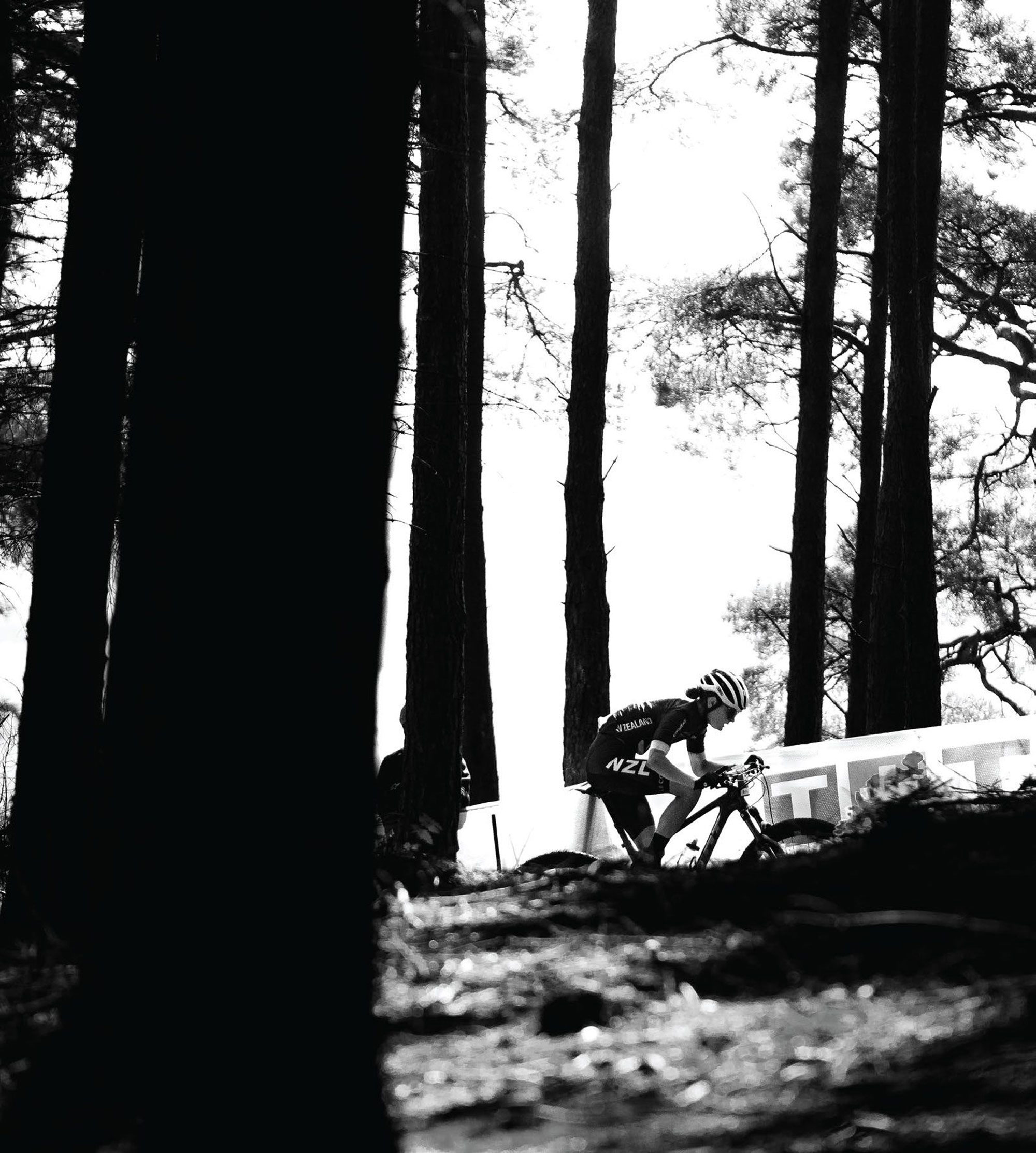
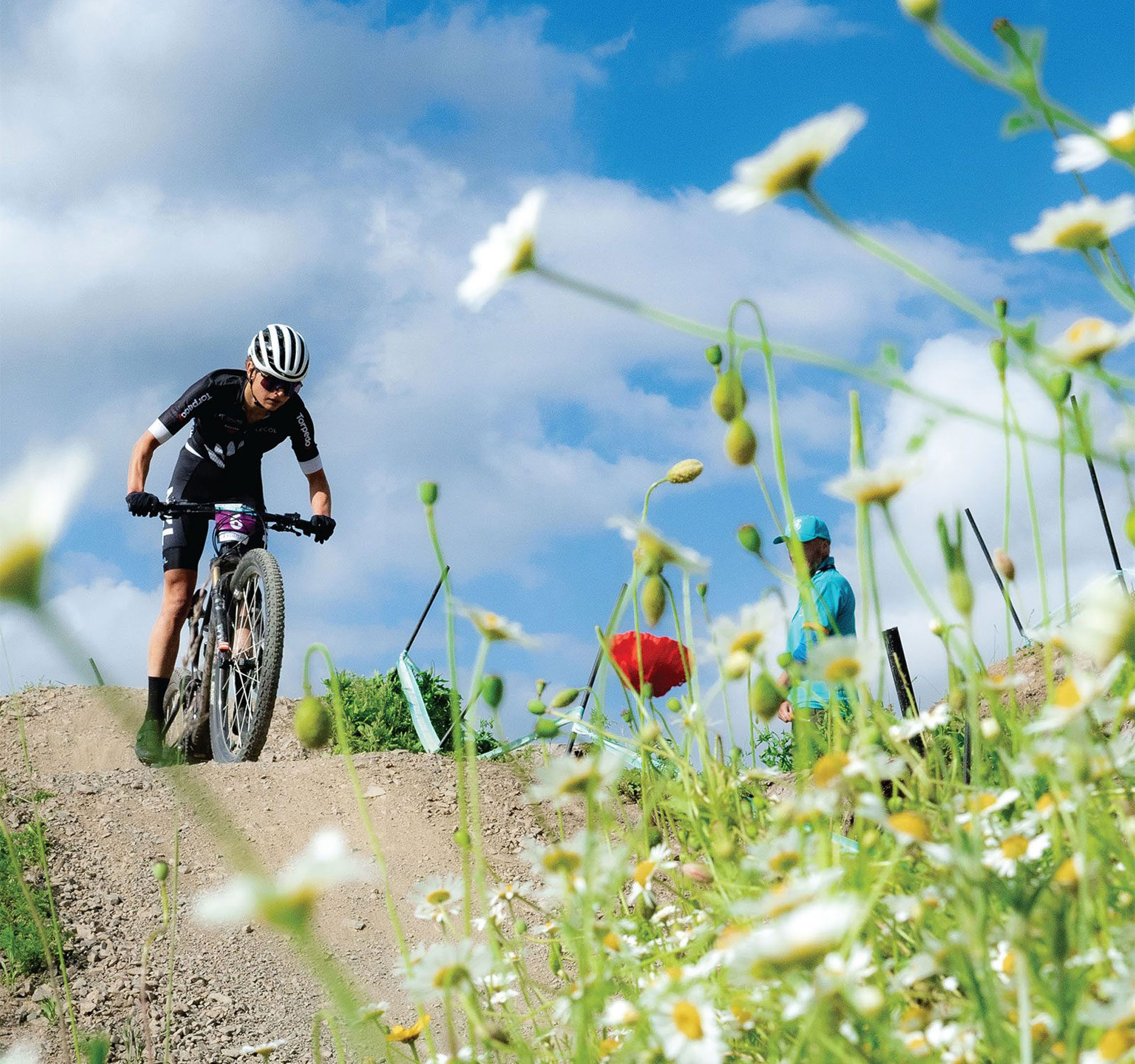
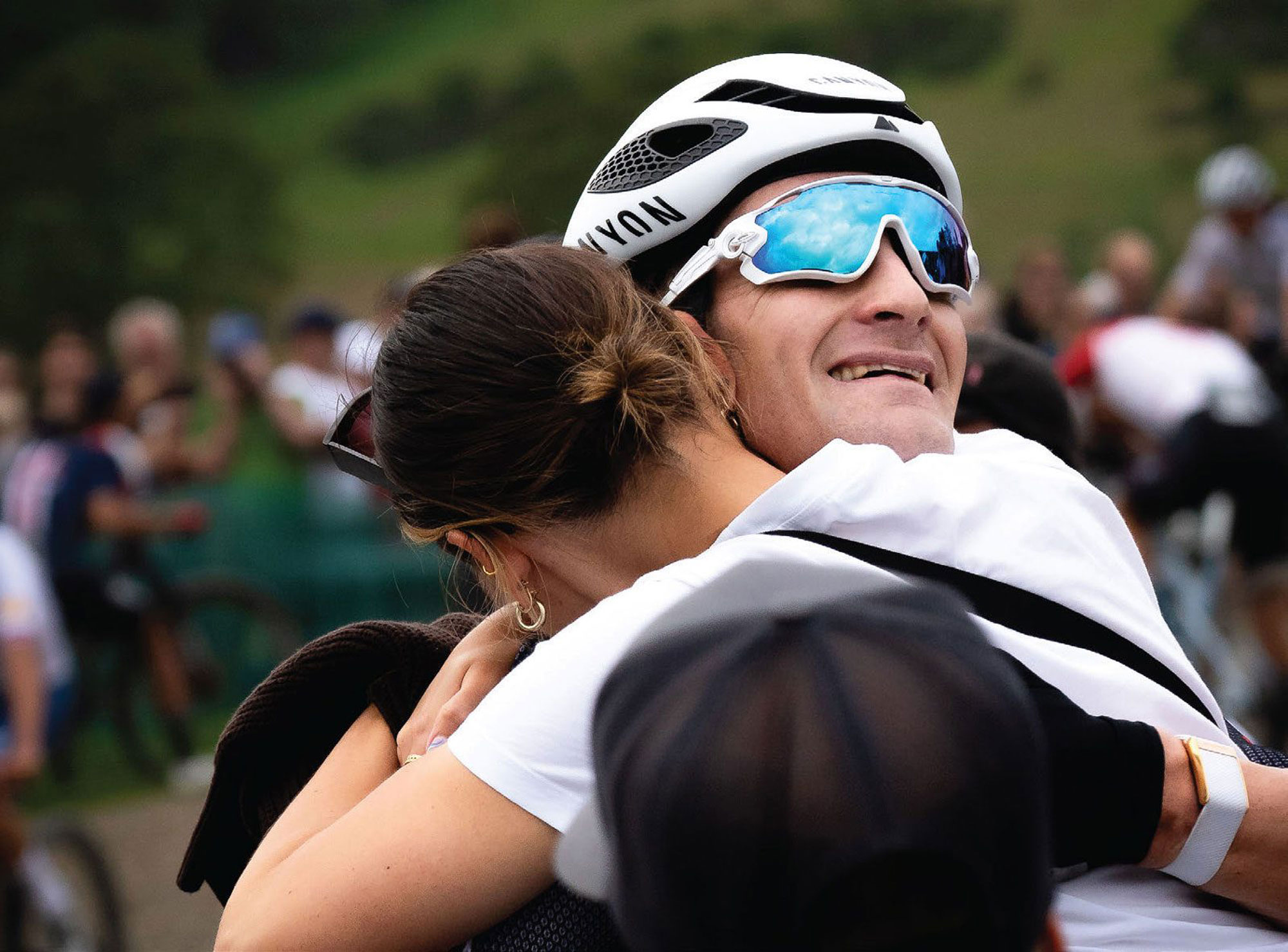
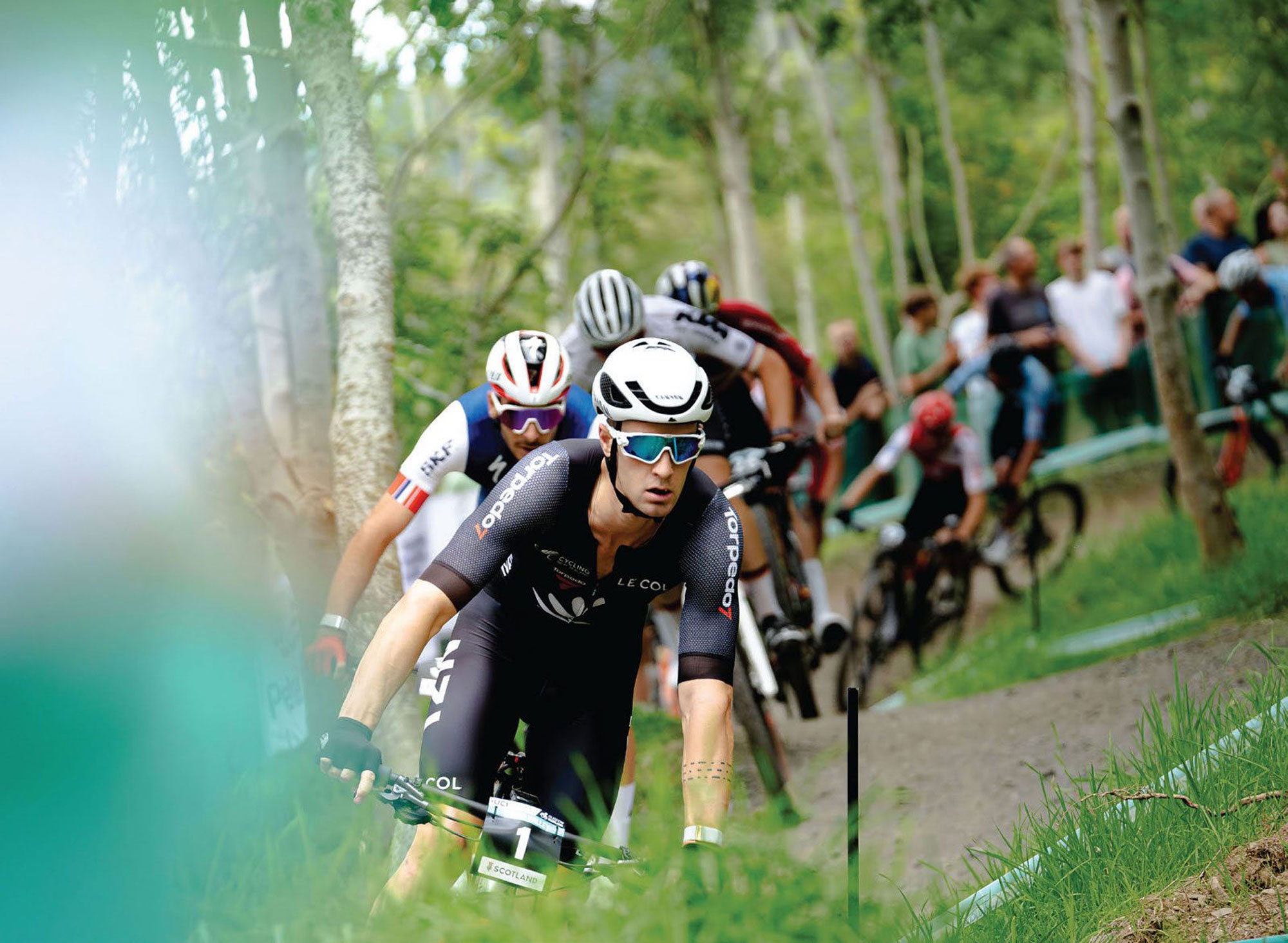
I managed to get there in time to catch a little bit of practice before the women’s event started. Emmy Lan was the first to drop, setting a time of 5m26.653s. From there, the times tumbled and tumbled. It seemed like every rider that came down was just going faster and faster. After the first 20 riders, Tahnee Seagrave was sitting on the hot seat. A pretty incredible feat after her huge crash into the barriers a couple of days before. Phoebe Gale came down to knock Tahnee off, only to then be knocked off by the local – and crowd favorite – Louise Ferguson. The cheer was huge when she crossed the line. People were stomping their feet in the grandstand, cowbells were shaking, and old bike parts were getting smashed together noisily. The MC was getting the crowd hyped up. The noise was biblical. It was a British 1-2-3 with 10 riders to go. A couple more riders came down, but it was still a British 1-2-3 until France’s Marine Cabirou came down and smashed the current leading time by 7.36s. That put a stop to the possibility of a British winner. Camille Balanche came down 0.341s faster. She was in the lead with two riders to go. Only Nina Hoffmann and Vali Höll could deny her a second rainbow jersey. Nina was up at the first split but behind at the second, but a crash in the berm just after the road gap would dash her chances of taking the win. Vali Höll was last to drop. She had been on form this year. She had seemed to have found her groove this year in elites after making some big mistakes in her first year. She was dominating the WC series for 2023 and did the same in Fort William, laying down a championship run. Making short work of the track and winning by 2.020 seconds. She was the only female to set a time under five minutes. Back-to-back World Champ wins for Vali; and I’m sure it won’t be the last for her. At the end of the women’s final, the weather was still holding out. It was hot; the sun was shining, and it looked like it was going to stay okay for the men’s race. As the first 30 men came down, it was holding, but the dark rain clouds were starting to show their ugly faces around the tops of the mountains. As the Scotsman, Greg Willison, was on his run, the heavens opened. Light at first before getting really heavy – I’m talking big- ass droplets of rain that soak everything. Greg came down to take the lead by 7.753 seconds. A few riders later, Angel Suarez came down just to pip Greg by 0.47s. It looked like Angel was going to be the last guy with a dryish track. I thought to myself: “This might be it; there’s no way someone is going to beat that time on a wet track. Is Angel going to win? Is it going to be one of those races that’s decided by the weather?”
The rain continued to lash down, saturating everything in sight. I got my waterproof jacket and pants on but it was so wet that, after five minutes, I was soaked through. From the grandstand, all you could see in the crowd was a sea of umbrellas. The track had completely changed. Riders were still putting down fast sections in the top, due to the fact it actually gets grippier in the wet but, from the woods down, it was a different story. Rider after rider came down, absolutely soaking wet and still pushing by the bottom, but no one was even remotely close. It looked like they were at war with the track, rather than racing it. I really thought the race was done… until Matt Walker came down. He was up at splits one and two and had made light work of the woods. It looked like he was going to be up coming into the motorway, until he had a huge crash. His front wheel slid off a metal bridge, and he drove himself into the ground. It was horrible to watch but, somehow, he got up and was okay. Maybe the dry times were beatable in the wet, but it would have to be a helluva run. Danny Hart came down and was looking good, but he lost around two seconds in the final split. Charlie Hatton was up next. I was hanging out with Innes Graham at the time, chatting with him about whether he thought Charlie might win the race. Innes had been working as a line coach for the GB team all week. “I reckon Charlie could be a good shout; he’s been looking so fast all week. Very consistent with his riding. It could be him,” he explained. Charlie set off out of the start gate. He was up at the first split. He was up at the second. He was riding amazingly. So smooth, fast, and controlled. There were no wobbles or bobbles. The third split was green as well. It was a master class in how to ride in the wet. He hit the motorway, and the split was green again. The crowd was going crazy. He was going to better the dry time. He jumped into the first arena and crossed the finish line. We had a new race leader! Charlie Hatton had mastered the wet conditions to take the hot seat by 2.464 seconds. The crowd went mental! There was so much noise. It was crazy! “I think that’s the winning run,” said Innes. Rider after rider came down, but no one could beat the time. Laurie Greenland came down and got closer than anyone so far, making it a British 1-2. The Austrian danger man, Andreas Kolb, set off out of the start hut. He was faster at the first split and faster at the second. He was up; on the run of his life. Was he going to topple Charlie? He came into the woods at a ridiculous speed but had a bit of a ‘moment’ and lost some time. At the third split, he was 1.5 seconds back. Not an unachievable amount to make up on the motorway, but it would be hard. At the fourth, he had made up a bit of time. He crossed the finish line; it was going to be close. There was a split second of silence, 0.599s back. Charlie had kept the lead. Andreas in second. There were three left at the top of the hill, any of them capable of winning. Troy was the first to drop of the three, but he was unable to better the time. Loic Bruni was next. His run was amazing, but it wasn’t enough and so it was fourth place for the Frenchman. Loris Vergier was the last man to leave the hut. He was behind on all the splits. As he hit the finish area, it was clear that he wouldn’t be able to better the time of Charlie. As Loris crossed the finish line, there was an almighty cheer. Charlie had done it. He’d ridden the run of his life – a true master class of a ride – like a true champion. He bettered everyone – in terrible conditions. It was a magical moment to witness. His family and friends jumped the barriers so they could hug him. What a way to finish off the DH weekend of World Champs! A British rider taking the top 1st and 3rd spots. A British-made bike in first and second. What a way to round out what might be the last ‘world’ level event at this epic race venue of Fort William (there are rumours going around that that was the last race at the venue).
THE NOISE WAS CRAZY
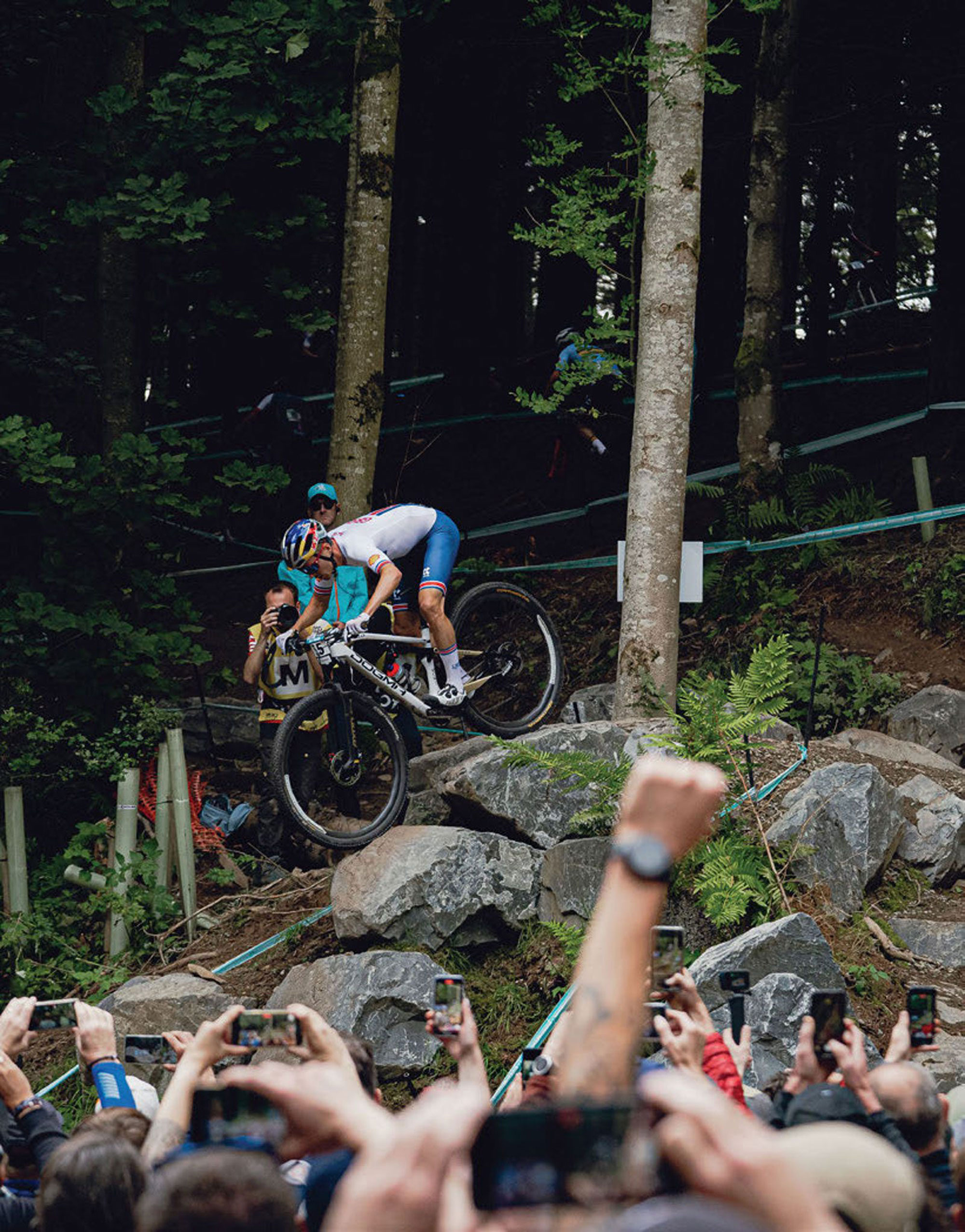
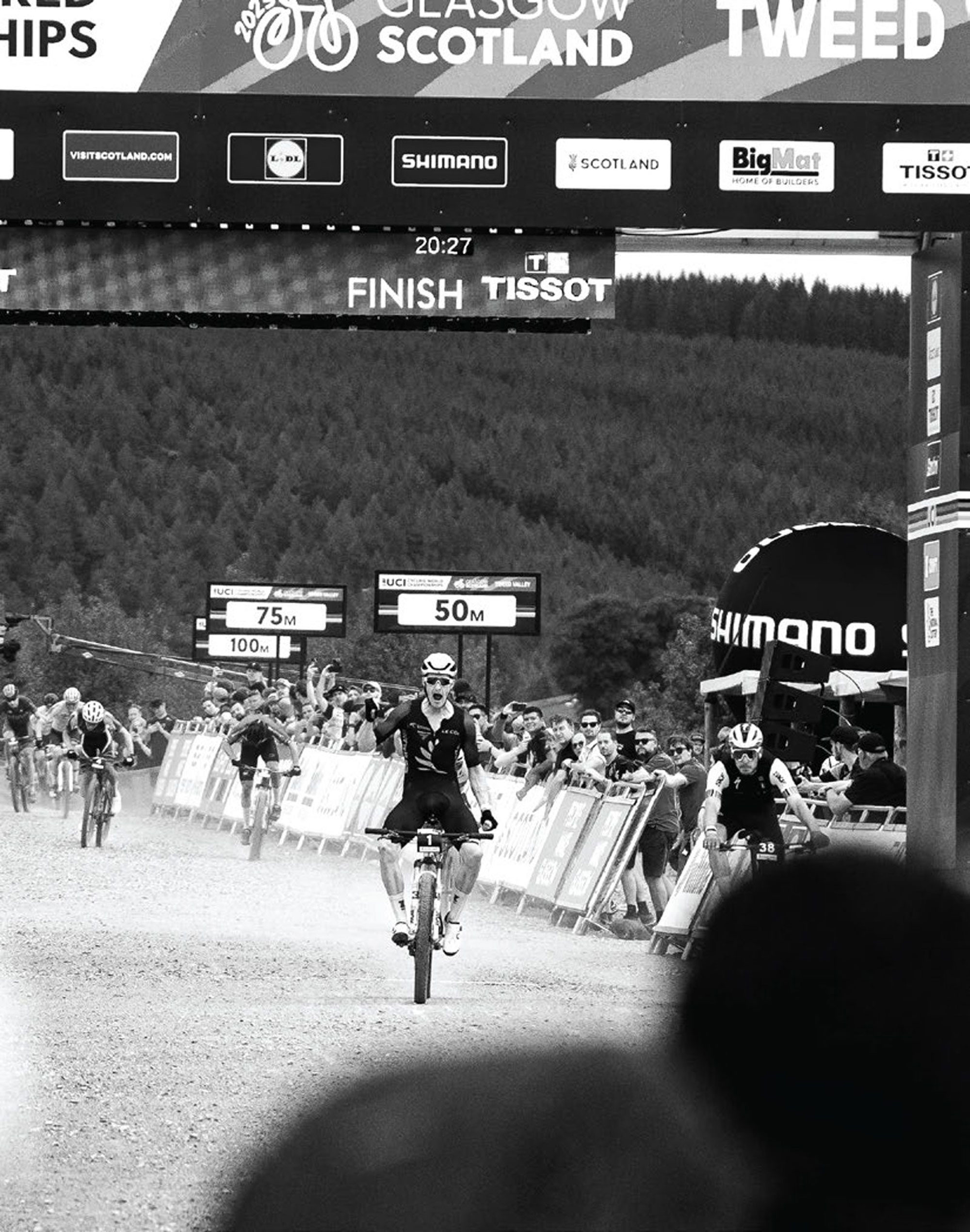
The following weekend, the XC World Champs were held in my hometown of Peebles. Well, specifically, Glentress Forest, about 3km from Peebles. I pretty much grew up in this forest. I rode there every weekend as a kid. I worked in the bike shop at the bottom of the hill for years. Many, many years of my life had been spent there, and now the World Champs were going to be raced here. Crazy. There had been some Enduro World Series events raced here in the past, but I never thought in my lifetime I would see World Champs being raced here. It made me proud to be from there and to have grown up in this small part of the world.
Peebles had really gotten behind the event as well. Bunting was hung up all along the high street. The local businesses had lots of bikes and World Championship-themed displays in their windows. The local butcher had made a special pie for the event. There was a buzz and energy around this normally sleepy, unassuming town. Throughout the week, you would see XC race bikes parked outside the cafes and coffee shops.
The event organisers had built a special one-off course just for this race. It was a really well- thought-out course that would make for some exciting racing. It used a mix of old walking tracks and fire roads for steep, pinchy climbs. Existing bike trails were used, mixed in with some freshly cut technical descents and climbs. There were a couple of gap jumps, with the man-made rock roll, The Salmon Ladder, a crowd favorite. It was quite technical and impressive to see being ridden with the seat up. The rest of the course used the new development of bike trails that had been built at the bottom of the hill. It mixed and linked different trails together. A great way to showcase this yet-to-be-open part of the hill. It was a course that had a bit of everything, keeping the riders on their toes and producing some exciting racing.
The first big event of the week was the short track. It’s basically a 20-ish minute all-out sprint on a shortened version of the XC course. I’d been to a few of these over the summer, at the World Cup events, and I have to say it makes for one of the most exciting events to watch.
The men were up first. Straight off the line, it was an all-out war as the riders battled each other to try take the lead and gain control going into the descent. Luca Schwarzbauer powered his way through and was in the lead into the descent. The fans were out in force, hanging over the barriers and cheering at the riders. There were a lot of lead changes over the laps. The crowd favorite, Tom Pidcock, had been working his way through the field after starting a few rows back. Sam Gaze had been hovering around the front, just waiting to make his move. Lap after lap went by. No one was really making any attacks. Watching them go by, I could not believe how fast they were going. The speed they rode the descent at was so impressive and, when they hit the start-finish straight, they got even faster; warp speed. I didn’t know you could go that fast on the flat. On the last lap, Gaze made his attack. He went on the climb, and no one could match his pace. He just kept pulling and pulling, almost like he had an extra gear. Tom Pidcock made a move as well, up to 4th before making a huge dive up the side of Luca Schwarzbauer on the last turn. Gaze held the lead across the line and took the win. Victor Koretzky in second. Tom Pidcock in third. It was a huge moment for Gaze and another Rainbow Jersey for NZ. Tears of joy, and a huge smile, were present on the normally emotionless face of Gaze as he hugged his partner. What a race that was.
Up next was the women’s short track. To say that Evie Richards was the people’s favorite would be an understatement. Throughout the practice laps, everyone was shouting “GO EVIE!” as she rode past. She was definitely getting the biggest cheers of the event, and it was understandable. The UK fans adored her. If you can say one thing about the UK fan, it’s that they are super patriotic.
The race had an explosive start. Just like the men’s, it was a race to be first into the descent to try to control the race. Italy’s Marina Berta led up the first climb. The big names were in close pursuit: Pauline Ferrand Prevot, Evie Richards, Puck Pieterse, Rebecca Henderson. There was a breakaway group of six riders, and that was where the race was really happening. Lap after lap, the lead rider of the group would change. By the halfway mark, it was anyone’s to play for, but one rider was playing it smarter than the rest. Prevot didn’t seem to want to take the lead, just sit in the pack, save energy, and wait for her moment. By lap seven, a few of the chasing pack had caught the leading group. Lap nine saw the first real attack of the race. Evie set off on her bid for the win. You could see in her eyes how much she wanted this. She went off. Prevot and Puck Pieterse chased. They broke away. Into the final lap, Evie was leading. The crowd was going mental. Was she going to do it? As they hit the climb, the patient Prevot made her move. She went, Puck tried, but she couldn’t match the pace – Prevot was in a league of her own. She went on to take the win. Puck would take second, and Richards would take third. Another super exciting race.
The following day would be another great day for New Zealand. Samara Maxwell rode a truly dominating race to take the win in the U23. She led from start to finish. No one was even close to her. She was truly in a league of her own in this race. It was an incredible performance to witness. Another gold for NZ.
Saturday was the big day: the Elite XCO; the final mountain bike event of the World Championships. Thousands and thousands of people descended upon Glentress to watch the show. The cycleway from Peebles to the event was so unbelievably busy with spectators riding to the event, and it was so cool to see. Fans lined the track with flags flying, vuvuzelas blowing, cowbells ringing. Places like the Salmon Ladder were completely packed, with maybe two or three hundred people in a tiny area, all watching their favourite riders tackle the technical section. The sun was out at the event but there were dark clouds lurking around, making for a moody atmosphere. It was shaping up to be one heck of an event.
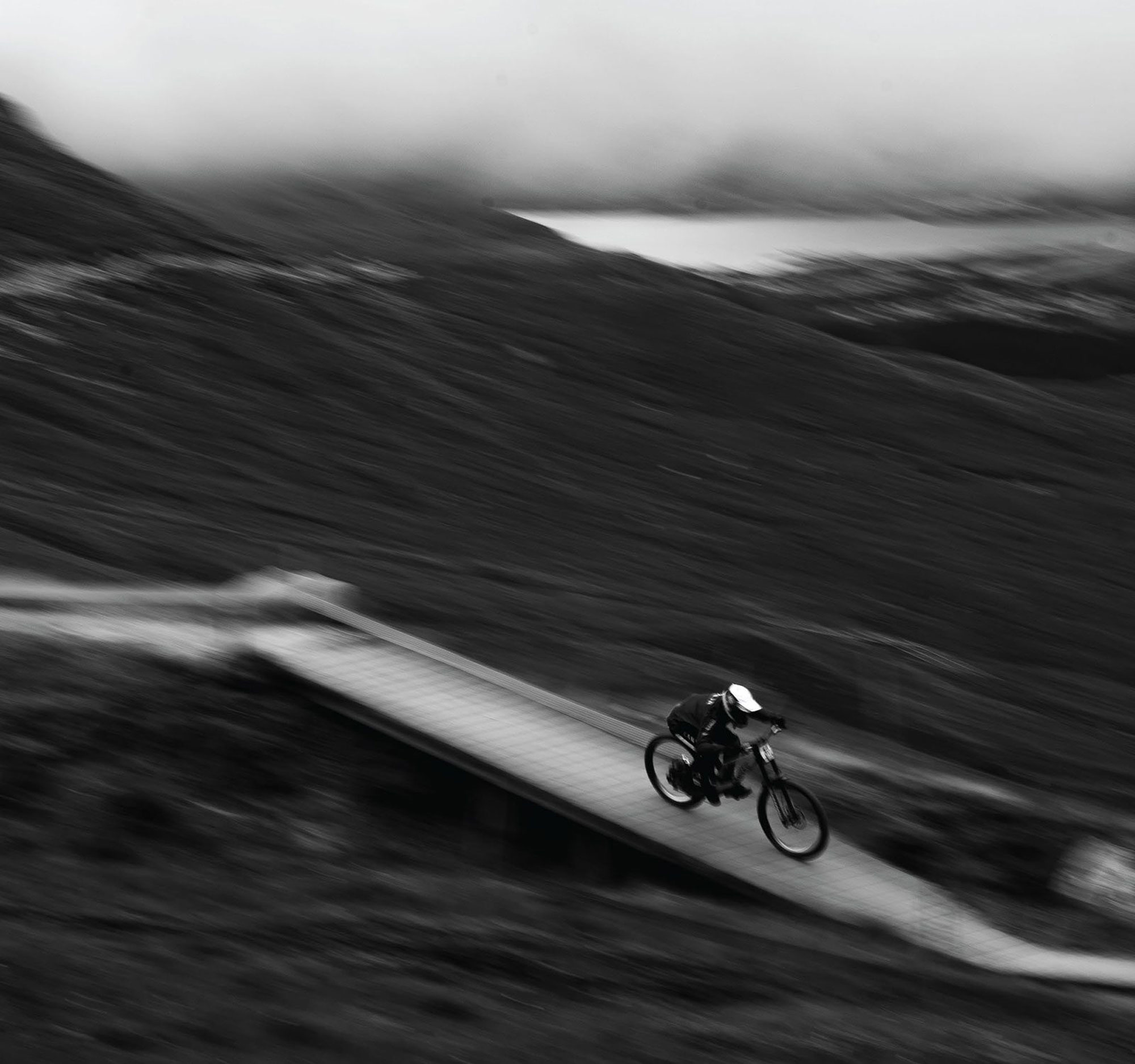
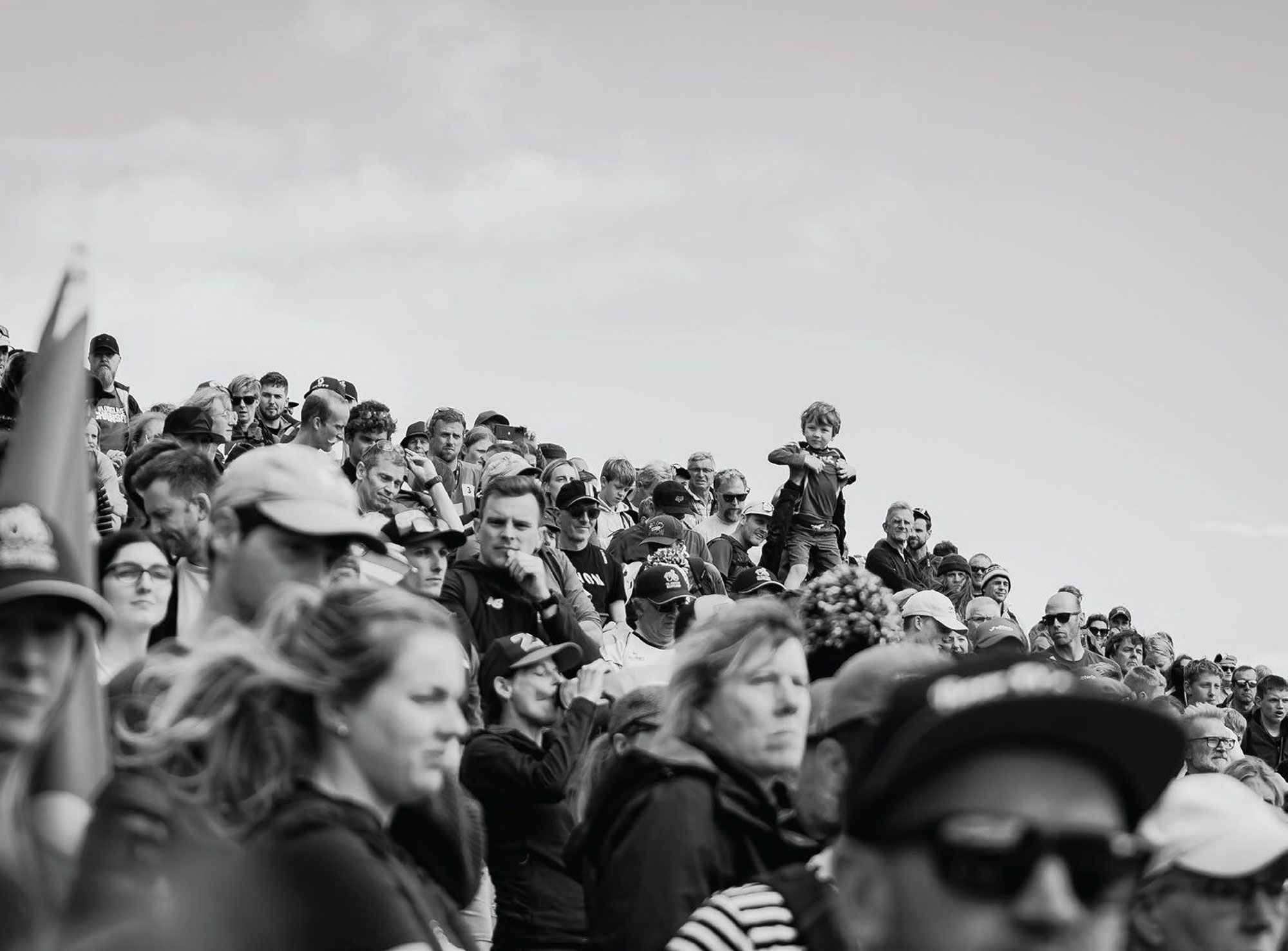
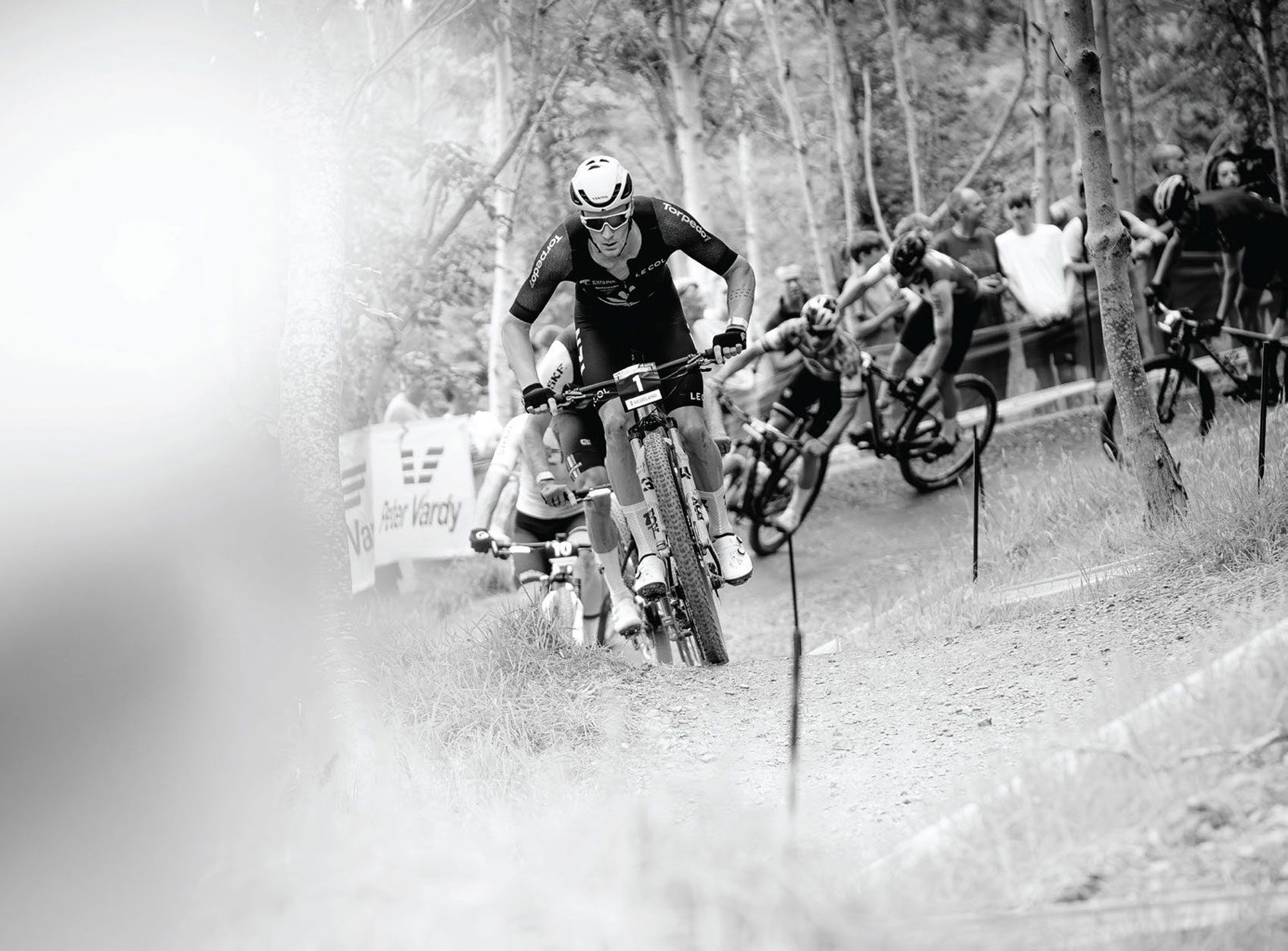
2023 UCI MTB WORLD CHAMPS
Scotland, you did well.
The women were up first. Seven laps plus one start lap, making up 26km in total. How was it going to play out? Off the start, Puck Pieterse and Loana Lecomte made an early attack to get out front and take the lead into the first main climb of the lap. The short track champion, Pauline Ferrand Prevot, had a bit of a tough start, resulting in her trailing 16 seconds off the pace going into the first descent. The fan favourite, Eve Richards, was in the mix, a couple of seconds back. You could tell how much this race meant to her, just by watching her facial expressions. She was giving it her all but, alas, it wasn’t her day. Loana Lecomte put the hammer down on the descent to put a good gap between her and Puck. Prevot wasn’t going to let them get away, though; she set off in pursuit of Lecomte. After the first lap, Prevot had narrowed the gap from 16 to five seconds. She was on a mission. By the end of the first big climb on the second lap, she had passed Lecomte and was riding off in formidable fashion. She didn’t even look like she was trying; in a class of her own. It was her race. She went on to put on an absolute master class, taking her second set of rainbow stripes of the week. Lecomte would go on to take second, while Puck came in third. The final event was the men’s XCO. The riders lined up on the start line. Big names were getting announced by the MC. It wasn’t just big names from XC lining up, though. Peter Sagan was racing. Mathieu Van Der Poel was looking to do the triple after having won the rainbow stripes in road the week before, and cyclocross earlier in the year. Tom Pidcock and Sam Gaze were placed a few rows back. Eight laps plus one start lap – a total of 29km of racing lay ahead. It was an explosive start; straight off, people were sprinting to fight for position. Disaster struck for Van der Poel, though, as he washed the front on the turn into the start-finish line on the first lap. He was out. As the riders hit the first main climb, it was Jordan Sarrou out in front leading, with Nino Schurter close behind. Nino laid down the law on the descent and took the lead after the first lap, with Sarrou, Pierre de Froidmont and Alan Hatherly all within a second of him. Alan Hatherly made an attack and took the lead, putting himself in front, but where was Pidcock? He was making up places after his mid-pack start. He’d made it up to 11th and was on the move. Hatherly, Sarrou, and Schurter were starting to pull away from the main pack. At the end of the second lap, Pidcock had moved up to 5th, only four seconds off the leading pack. The crowd was going crazy watching what Pidcock was doing. It was a superhuman performance. Schurter and Hatherly put down the hammer, trying to put some time between them and Pidcock. Sarrou was dropped -he couldn’t handle the pace. Pidcock moved up to third, but it wasn’t long until he caught Schurter and Hatherly. The noise as he joined the leading crew was crazy; a massive cheer could be heard throughout the forest. Pidcock was pushing them, but only Nino could match the pace as Hatherly started to fall back. It was a two-way battle for the win, with three laps to go. Something was happening behind. The quiet Kiwi, Sam Gaze, had turned on the afterburners and was working his way through the pack like a man possessed – passing riders like they were standing still. It was crazy, the amount of time he was making up. With just two laps to go, he was up to fourth. Pidcock had taken the lead and was riding his own race. He was just in a different league on this day; no-one was even close. He would go on to win the race in dominating fashion. But the really exciting person to watch in the last two laps was Gaze. He passed Hatherly to put him in third, and was catching Nino. Could he do it? Come from mid-pack and get the silver? Near the end of the seventh lap, he passed Schurter. As they entered the final lap, Schurter tried to hold back Gaze but, alas, it was too late. Gaze powered off, leaving Schurter hurting. Gaze was riding so fast that he managed to claw back 12 seconds off the lead that Pidcock had in that final lap. He had put in a heroic effort to take the silver. Schurter would go on to take bronze. A huge crowd had gathered at the finish line to see Pidcock cross the line and take the rainbow stripes. Boards were getting banged, cowbells were ringing, and cheers were shouted. What a way to finish. He rode an incredible race, coming from mid- pack to take first by a big margin. Amazing! After the medals and jerseys had been presented, Tom travelled through the crowd, up onto the grandstand. He stood there with the rainbow stripes, gold medal, and a British flag around his back. It was a magical moment to witness. The crowd was going crazy. A true champion.
In the end, Britain took the top spot on the medal table at the Inaugural World Championships, with 56 medals. New Zealand took eighth spot, just behind Switzerland. Not bad for a country of 5.1 million people. Best of all, NZ beat Australia by a long way.
World Champs have always delivered a whirlwind of emotions, crazy stories and great racing – and this year was no different. Scotland put on a heck of a show. The crowds were crazy. The racing was fantastic. These had been races to remember and I’m glad I was back to witness them in person. Scotland, you did well.

Burgtec Cockpit
Words Liam Friary
Image Cameron Mackenzie
RRP $315 – Bars | $199 – Stem | $54 – Grips
Distributor Everoutdoor
Burgtec Components are well known for their race pedigree. The UK based brand has been synonymous with downhill racing since ‘04. The Santa Cruz Syndicate, 50:01 crew and a large roster of riders have helped push the development of Burgtec’s sturdy component range that can stand high-level racing demands.
I have been riding Burgtec’s cockpit for the last few months. For a new Santa Cruz Hightower build, I went with a Burgtec Ride Wide Carbon Enduro Handlebar, Enduro MK3 Stem and Super Soft Greg Minnaar Signature Grips. Seeing that harsh UK trails helped to develop these products, I thought it would suit our harsh environment back home as well.
The Burgtec Ride Wide Carbon Enduro Handlebar is a full 800mm width bar made from Uni-directional carbon fibre, coming in at a respectable 258 grams. A 9-degree backsweep paired with 5-degree upsweep are familiar numbers to most, with a 30mm rise and 35mm clamp being the only offerings for this model. There are handy cut marks to help you trim ‘em down to whatever width you’d fancy, and some handy torque recommendations are in place to ensure you do not damage them.
The Burgtec Enduro MK3 stem is well suited for the current crop of enduro bikes and riders. Burgtec wanted a stem that offers the best amount of bar-to-steerer precision they could.
So, to stack up to these demands, without adding a heap of weight, Burgtec had to modify their manufacturing to include an initial forging stage, aligning the grain of the 6061-T6 aluminium and improving the strength and fatigue life in the process. Along with that, they added some bulk and length to the steerer interface -the bigger overlap helps with the stiffness.
To finish off the cockpit, I opted for Burgtec Super Soft Greg Minnaar Signature Grip. They enlisted the help of the GOAT who needs no intro. These grips were prototyped through the 2020 season and based on the World Cup winning pattern of the Bartender Pro, as used by Greg along with Nina Hoffman, Danny Hart, and Angel Suarez. The Super Soft is made up of a unique blend which fuses together additional suppleness with an extra tacky compound. It’s all in the aid of avoiding hand pain, even at the bottom of the rowdiest track.
Let’s turn the attention to how the cockpit felt on the trails. I’ve had this bike built for a few months now and every time I finish a ride, I want to get out for another one. Perhaps that’s just my current mood but, when you have good bikes and reliable components, it does bring more joy to your riding. The understated-with-just-enough-graphic- aesthetics of the cockpit is absolutely dialled in my opinion. But the looks do stack up. I found that there’s a nice neutral/natural feeling sweep, to the bars. They also felt nice and compliant – no harsh feel like other similar bars at 35mm clamp, which have felt overly stiff. The grips were damn soft and had a great overall feel with or without gloves.
The combination of the Ride Wide Carbon Enduro Handlebar and Enduro MK3 stem combination provides a noticeably direct connection between the hands and the front end, without a single hint of undesirable twist. As I indicated earlier, there wasn’t a harsh feel – even when venturing down some chunky, rocky terrain in the South Island. When the bike has been boxed up on the back of the rig, and thrown under other riders, the high-quality hardware with good tolerance shines.
The word ‘solid’ comes to mind for the Burgtec Ride Wide Enduro Carbon Handlebar and Enduro MK3 Stem. These are at the higher end of the price spectrum but will stack up to the demands of hard chargers without blowing your wrists apart. Of course, grips are quite personal but, for me, the Burgtec Super Soft Greg Minnaar Signature Grip feel superb and finish off the cockpit nicely. I only hope these don’t have to be returned.






